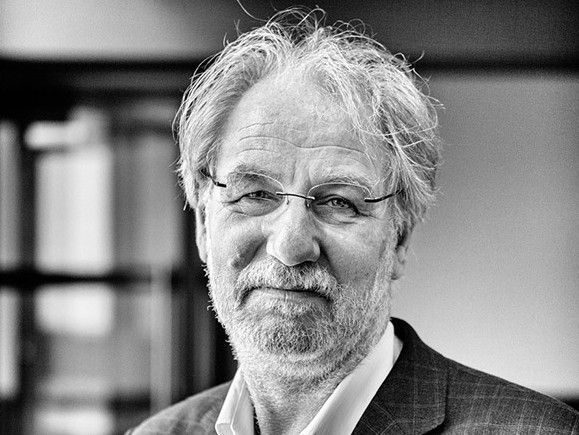
"After the initial growth phase, it is time that the circular economy grows up and is rolled out on a larger scale”, says Jan Jonker, Professor in Sustainable Entrepreneurship. "We are on a train but have to work hard to speed it up. The circular economy is not a matter of 'turning a few knobs', we are talking about a real transition.”
Many companies are already busy trying to create a circular business model but, in practice, this is easier said than done. How can those companies really implement circularity into their strategy and operations? To help these companies, Jan Jonker, Ivo Kothman, Niels Faber, and Naomi Montenegro Navarro wrote a workbook for the development of a circular business model.
Based on the step-by-step plan described in the workbook, organisations can make a concrete start to create their own circular business model. "Because circularity matters”, says Prof. Jan Jonker, who lectures Sustainable Entrepreneurship at the Radboud University Nijmegen and is one of the initiators of the workbook. "The circular economy is a society in which cycles based on (mono)materials are closed wherever this is possible, in which products are used as long and as intensively as possible and where the design of the manufacturing process is based on using the least amount of non-renewable resources. When we really manage to handle resources, products, and semi-finished products in the most circular manner, we can still have a thriving economy."
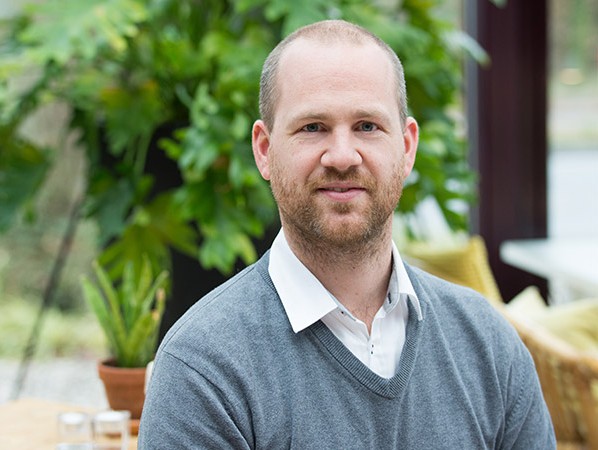
Ivo Kothman has been connected as a researcher and programme manager to the research project Business models for the CE via the Radboud University. There are few people who realise better that the transition to a new, circular business model is extremely complex. "It’s not difficult to understand every separate building block, but to combine them all together is a huge challenge. Even for us, as seasoned and knowledgeable researchers, it was a major job to combine all the elements of the circular economy. And it is the combination that creates the challenge. The issue must not be approached from either the left or the right, but literally from all sides at the same time."
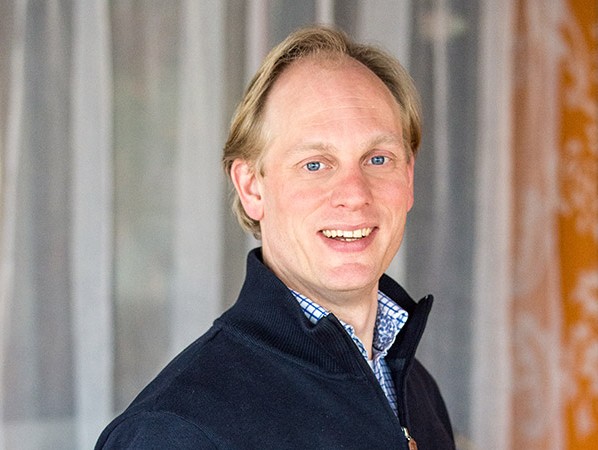
One of the main goals of the authors was to create a workable book, says Niels Faber, researcher at the Radboud University and lecturer at the Hanze University of Applied Sciences in Groningen. His research focuses on the organisational aspects of sustainable development. "The first part of the workbook is rather theoretical, it explains the background of the circular economy. When you start working on creating a circular economy, then this is the basic knowledge you need to have. The second part was written in an even more accessible manner and includes a practical step-by-step plan. We will we guide you through the story in a few large steps. But that doesn't mean that we are wearing seven-league boots. On the other hand, we do say: study this first, then think about it, reflect on this and that, etcetera."
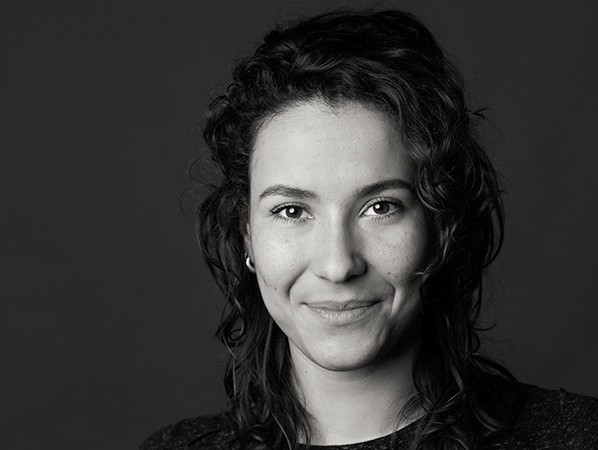
According to Naomi Montenegro Navarro, the conceptual foundation of the circular economy has not yet been sufficiently established. "Many people can give a basic definition of the circular economy, and they more or less mean the same thing in a broad sense, but the practice appears to be much more complicated. There is hardly any uniformity on the concept and definitions. The workbook zooms in on business models in the circular economy while we are still tweaking the conceptual framework. It will take a lot more research to further develop and ultimately realise the circular economy.
This is the first time that such a practical method was published. The workbook does not include tools to measure where your company stands right now, adds Niels Faber. "It's a first draft of an architecture, the design, of a circular business model. We don't explain, for instance, how to set up a management structure or a planning and control cycle."
"But don't be deterred by its complexity”, warns Ivo Kothman: "The first time doesn't have to be perfect. You can take one element and start there, take your time. Take a small step and build on from there. When your efforts are based on the right intentions, you are on the right path."
Naomi Montenegro Navarro agrees: "With the concept not yet been entirely embedded, entrepreneurs find it difficult to determine where to start. The workbook can show them the way forward. And, hopefully, it will stimulate people to take this first step. A unique feature of this workbook is a collection of cycle infographics. We added the infographics as examples of how parties have formed links and collaborations to close a certain cycle. Most of the infographics give insight into how a cycle is actually organised, so they offer a unique 'look behind the scenes' at all kinds of parties."
Despite the huge complexity, there is also optimism. Kothman: "When we look at all the infographics, you can see that there are so many wonderful initiatives that are already operational. The circular economy is already happening, and that's amazing!".
Jan Jonker concludes: "The time of just talking is over now. This workbook is still one of a kind, there is no other concrete tool for organisations to devise and develop a circular business model. But a lot of knowledge and information is already available, so we have to start now".
SOURCES
Jonker, J., Kothman, I., Faber, N. en Montenegro Navarro, N. (2018).
Circulair Organiseren: Werkboek voor het ontwikkelen van een circulair businessmodel.
Doetinchem: Stichting OCF 2.0.
The workbook was made thanks to the support from the KIDV (The Hague), DAR (Nijmegen), WEcycle (Zoetermeer), Saxion University of Applied Sciences (Deventer), Stichting Vlakglasrecycling Nederland (Zoetermeer), and ENVAQUA (Zoetermeer), in addition to the support from Radboud University and Stichting OCF 2.0. The workbook can be downloaded for free via www.circulairebusinessmodellen.nl
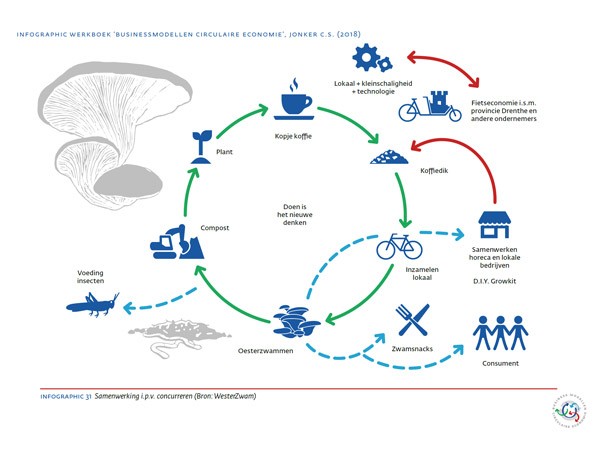
A business model is a way in which organisations create value and it contains three elements:
1. The value proposition: what added value is created from a financial, societal, and social perspective?
2. The way in which this value proposition is organised within the organisation or, possibly, with other parties.
3. The earnings model, whereby the organisational costs of the business model meet the revenues that are realised with the value proposition. A business model generally involves one organisation and is mainly focused on generating financial values. This way, value creation is narrowed down to sales, profit, and earning money.
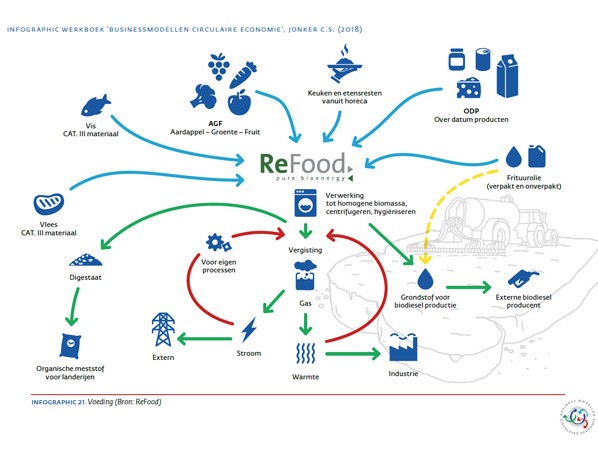
In the circular economy, it is necessary to broaden this definition of a business model. A circular economy requires close collaborations between companies and other parties to realise a value cycle. Additionally, the definition of value is extended.
Apart from financial values, it is also about creating social and ecological values. This is called multiple value creation. The result is a business model with multiple organisations and parties that create value through interdependent relationships. Value that not just exists by the grace of transforming new resources to products but by utilising the resources that are already available in better ways.
The consequence of organising multiple value creation together is that a fitting strategy must be determined as well as matching business and earnings models. Because organising the processes in cycles means that the business model must be based on, for example, selling the same resource or part of a machine multiple times and over a longer period. That means that sales are not just realised at one particular moment via one transaction, but at multiple moments over time. That requires strategic thinking.
Source: © Vakblad Voedingsindustrie februari 2019